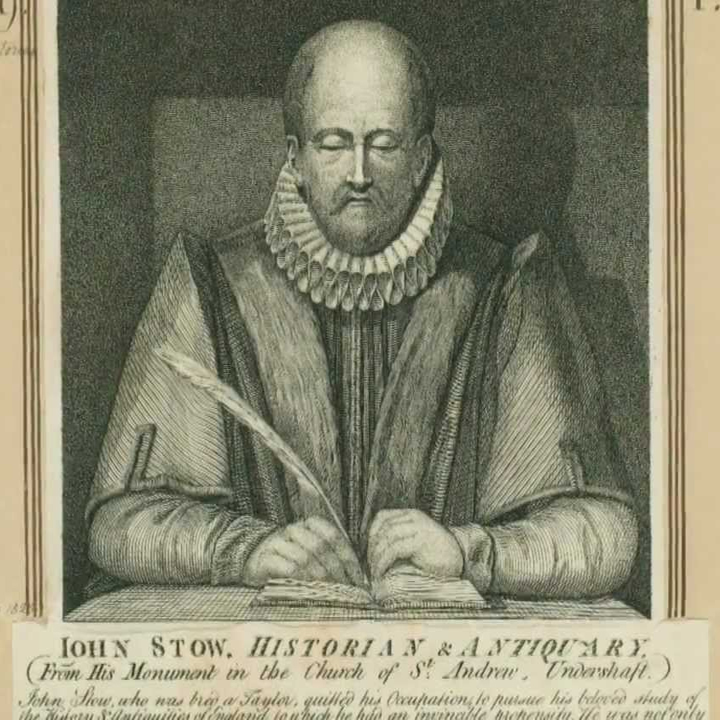…too great or extreme to be expressed or described in words.
Knowledge = Literature
Observation = Science
Understanding of Context & Building = History and Myth
All for the greater understanding of Cultural Sustainability and Social Political Agendas.
The architect builds visible history -Vincent Scully
London
… is no longer a city dedicated to the financial markets, instead a place which will contain all the activities and buildings associated with Metropolitan Urbanism.
John Stow
Born in 1525, an antiquarian. Spoke of the Ox and the Lamb, how they could be bought in Lsd for 1s / 26s 8d respectively. He pondered on how a place where sheds and shops became houses and built up (and outwards).
He surveyed London in great detail and provided possibly the most vivid and elaborate descriptions of Tudor London.
Stow left his trade as a tailor in order to become and antiquarian researching the history of the City of London. In his words he describes ‘It is now eight years since I, seeing the confused order of our late English Chronicles, and the ignorant handling of ancient affairs, leaving mine own peculiar gains, consecrated myself to the search of our famous antiquities’.
He began studying London Records primarily kept in the London Guildhall.
Research Points:
- Cordwainer Lane – Place he knew as a child
- Butchers’ Alley
- St Nicholas Shambles
- Stinking Lane – where he discourses on the rising price of Meat
- Billiter Lane
- Lime Street – in 1590 Stow discovered some antiquities from demolition works. There was a stone gate ‘about two fathoms deep’ which he believed dated from approximately 450 before (from the reign of King Stephen)
- Aldermanbury Street – Old Court Hall now employed as a Carpenter’s yard (London was in many aspects a place of ruins according to Stow)
- Old Jewry – Mayors House turns into Synagogue, House of Friars, a Nobleman’s House, a Merchants House, then a Wine Tavern (Known as The Windmill)
- Goldsmiths Row, between Bread Street and Cheapside Cross – this area saw renovation at a time when much of late Tudor London was in a ruined condition
Arched Vaults
Stow often mentions the presence of great houses ‘of old time built upon Arched Vaults, and with gates of Stone’ which date from the Eleventh and Twefth Centuries.
The encroachment of the houses around older versions of the grand London house (established around a separate hall and courtyard) lead to them acquiring a reputation for being ‘rather dark and narrow. This was the outcome of unconsidered planning.
Population
85,000 by 1565
155,000 by 1605
+20,000 if we include those who lived in ‘the liberties’ or ‘the bars’
The author deems this a population explosion. In contrast, nowadays under 5,000 people live in the City of London and this figure is regulated to aid financial stature.
Interestingly, in Tudor times the price of property had risen steeply enough for even ancient ditches which were used for defense and refuse, to be filled in and covered over to make way for the erection of more properties.
Things became so expensive that Elizabeth I stated there was no chance of sustaining ‘victual food, and other lice necessaries for man’s life, upon reasonable prices, without which no city can long continue’.
The queen sought to tackle one of London’s earliest overcrowding problems by prohibiting any new buildings of and house or tenement within three miles from any of the gates of the City of London. This has since been suggested as the first venture at ‘Green Belt’ around London.
They (Queen Elizabeth I and her advisers) also enforced the idea that one family should only occupy one house.
Through this era, immigration led to a Cosmopolitan London:
Low Countries – Brewers and Bookbinders
France – Tailors and Embroiderers
Italy – Gunmakers and Dyers
Netherlands – Weavers
20 – 25 Life Expectancy for the poor
30 – 35 Life Expectancy for the rich
The Tour:
A tour was offered to visitors where they’d be taken to see The Tower, The Royal Exchange, St Paul’s, Ludgate and The Strand, followed by magnificent arrival at Westminster and Whitehall.
A foreigner comments ‘the common people are still somewhat coarse and uncultured… and believe that the world beyond England is boarded off’. – Swiss Medical Student.
Conclusively
Stow speaks of Londons ‘demise’ in a way that made me feel responsible about the fabric of the City, where we as architects will one day be entrusted to make what society understands of our culture and in turn, seeks inspiration from for a better informed future; rather than omit all hope through lack of historical information and understanding of place.
He demonstrates the importance of paying particular attention to the history of place in order to identify the customs and practices of a people. Outlining not only the benefits of doing so but the drawbacks from capitalism seeking to take advantage of the antiquity of a place.



No Comments